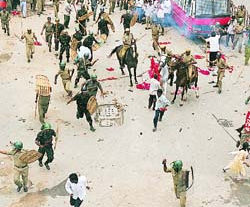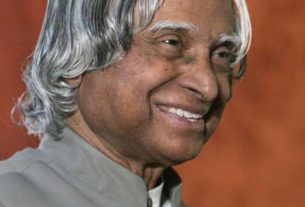By: Fatima Hasan
At a time when the recent elections in Maharashtra threw up BJP as the single largest party but this did not help the saffron party to form the government, political analysts, journalists and political parties spoke about the diminishing popularity of the BJP. Interestingly, the criticism is hard to believe as Lok Sabha elections favored BJP more than any other national and regional party. In this face-off between parties, there is one crucial point that needs to be analysed as to why the BJP is unable to work out its road-map to dominate the scene in the South Indian states. This, again, has to be understood with reference to the fact that Congress ruled these states for long. The five Southern states of Telangana, Andhra Pradesh, Karnataka, Kerala and Tamil Nadu currently have non-Congress governments.
To put this issue in perspective, we can trace the rise and strengthening of regional parties all across the country in recent times. Unlike the situation in other regions, the South Indian politics revolves around caste, language, region and ideology etc. In this scenario, the regional parties are able to command dominance over the national parties. As a matter of fact, regional parties polled more votes than the Congress and BJP combined from 2009-19, thus confirming the trend of regionalism.
Barring one or two, there are no strong leaders of BJP in these Southern States to pose greater challenge to these regional players for the CM post. The other aspect is that these states have significant Muslim and Christian minorities who usually do not vote for a party that blatantly asserts its Hindutva character [BJP]. These states have sizeable Dalit, tribal and backward class population, with upper castes constituting only 15-20 percent. The Hindutva ideology of BJP also seeks to undermine the regional identity of these States and it is hurting people who find it better to vote their regional leaders to power for promotion of their socio-cultural aspirations. Even more than any time in history, the local aspirations have risen so exuberantly that only the regional leaders know the ground reality and can woo the locals with their party manifestoes. Other possible reason could be the failure of the BJP party to mitigate the agrarian crisis and extend support to farmers with new schemes and loan waivers whereas the regional parties are doing better in this regard. The southern states are vibrant industrial and services sectors and are not predominantly dependent on agriculture.
On the question of why BJP is unable to capture power in the South, Shashi Tharoor told PTI in an interview May this year that, “In BJP rule, there is widespread assault on the spirit of cooperative federalism which has held the country together since Independence. This is partly on account of cultural factors such as the beef ban and the drive to impose Hindi as a national language, but also because of larger issues such as the uproar regarding the terms of reference of the 15th Finance Commission which has implications on the financial and political security of the Southern states.”
In the current scenario, even if the national parties emerge single largest but for reaching the majority mark, they emphatically have to take support from the regional parties to form the government though the stability of such a coalition is another factor. For instance, in the recent Assembly elections in Maharashtra, the BJP secured 105 seats, followed by its pre-poll ally Shiv Sena (56), Nationalist Congress Party (54) and the Congress Party (44). But this has led to dramatic developments, including imposition of President’s rule, short-lived BJP ministry of Devender Phadnavis with support of NCP’s Ajit Pawar and finally, swearing-in of Shiv Sena-NCP-Congress government led by Uddhav Thackeray.
When we take into account the Lok Sabha election outcome of this year, the number of seats won by BJP- Shiv Sena alliance indicated that the NDA was preferred more than any other parties with its tally of 41 seats (BJP. 23 and Shiv Sena 18) in Maharashtra. And this clearly underscored the fact that people voted the national party keeping national factors in mind. But the State Assembly elections were dominated by local factors.
Furthermore, compared to the Congress, which actually ruled these Southern states for several terms, the BJP could flourish for only one full-term even in Karnataka. Despite usurping power from HD Kumaraswamy-led JD-S-Congress coalition by engineering defections in Karnataka, the BJP is still facing internal issues. In combined Telangana and Andhra, the Congress was in power at the time of bifurcation in 2014, but the regional parties emerged victorious in the two Telugu states in the Assembly elections. While in Kerala, the two major political alliances: the United Democratic Front (UDF — led by the Congress) and the Left Democratic Front (LDF — led by the Communist Party of India-(Marxist) held power alternately. Congress-led UDF enjoyed power till 2016 and now it is the LDF. In the 2021 assembly polls in Kerala, the National Democratic Alliance led by the BJP may turn the electoral contest triangular by offering an alternative to the UDF and LDF. Even in some other States, it is just the regional parties on the scene —Trinamool Congress in West Bengal, Biju Janata Dal in Odisha and JD-U and RJD in Bihar.
Hence all these factors indicate clearly that it is a way too early for the BJP to think of “one-nation, one-party rule.” Not at least for another 10 years, the BJP can hope to gain power in all these southern States. On October 3, at IIT Madras, Prime Minister Narendra Modi set out to define the importance he attaches to the Tamil language and the Tamil people. By terming Tamil as the oldest language in the world, Modi was trying to clear the “misconception” that the BJP was a party for ‘Hindi, Hindu, Hindustan,’ to woo the voters. Well, with Tamil Nadu elections due in 2021, it is to be seen if BJP can make a grand entry in the State. (ends)


